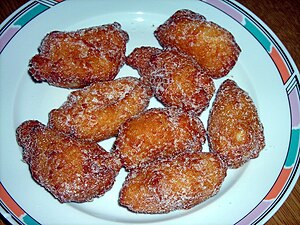Up to 3,000,000 visitors visit the Carnival of Venice, Italy every year. They come from around the world to see the splendors of Venice and enjoy a centuries old carnival tradition. The Carnival in Venice began only in 1296, when a decree of the Senate declared a public holiday the day before the beginning of Lent.
The Venice Carnival characters included jugglers, acrobats, musicians and dancers. They organized all kinds of events, including performances and exhibitions absorbing so much attention that Venetians business and production activities became less important. For many centuries, the celebration of the Carnival in Venice would last six weeks, from December 26 to Ash Wednesday.
Soon a close relationship started between theatre and carnival: in fact, as well as large outdoor parties, small performances and shows of various kinds were organized in private homes, theatres and cafes in Venice. In the eighteenth century the Venice Carnival became a real institution. Visited each year by thousands of visitors, the prestigious festival of Carnival in Venice at that time reached its zenith and international recognition: the effervescent and transgressive atmosphere, the comedy, masks, spectacular shows and the public gambling house made Venice 'The magnet of Europe'.
However, the intent of the Carnival in Venice, the origins and meaning of the festival, an opportunity to vent tensions and discontentment, caused the opposite effect: the ability to completely hide one’s identity in traditional Venice Carnival costumes and fancy masks increasingly became the perfect place for theft and harassment of various kinds.
These serious excesses forced the Venetian Republic to issue a series of decrees to limit abuses and fraudulent use of masks and costumes in Venice, measures that gradually went to undermine the very essence of the Carnival in Venice and the origins of freedom and equality. After sunset, under the cover of darkness, the Venetian Carnival transgressed into something more sinister, mysterious attackers could freely commit crimes of various kinds with the certainty of impunity thanks to the anonymity guaranteed by the mask. Since 1339 a ban was decreed on Venice Carnival masks and costumes at night.
Another abuse was the opportunity to wear women’s clothes or religious costumes to break into churches, monasteries or convents and commit indecent acts and libertines. During Venice Carnival in the 15th century therefore it was forbidden to enter holy places wearing masks. The threat to the safety of the inhabitants of Venice was due to the possibility for criminals to hide weapons and other dangerous objects under Venice Carnival costumes. Numerous official documents containing the prohibition to carry objects of a dangerous nature were therefore issued. Venice Carnival 18th century also forbade travelling to the casinos with masks and carnival costumes, due to the numerous incidents in which unknown gamblers were able to escape their creditors.
With the fall of the Venetian Republic in 1797, a permanent ban of Venice Carnival costumes arrived, with the exception of private parties in Venetian palaces and the Ballo della Cavalchina at the La Fenice Theatre: the Venice Carnival history was hard hit and a long period of decline ensued that led to the gradual shutdown of all parties connected to it. The last Carnival in Venice is dated at 1797. The fall of the Republic at the hands of Napoleon marked the end of the long independence of Venice and the abolition of the many traditions of the Venetian Carnival for about two centuries. Only from 1967 the first parties were reorganized with parades of masks and costumes, bringing back to life traditions and the Venice Carnival history. In 1979 a program to engage the inhabitants of Venice in the Venetian festivities was drafted for the first time to return the Carnival of Venice to its origins.



























